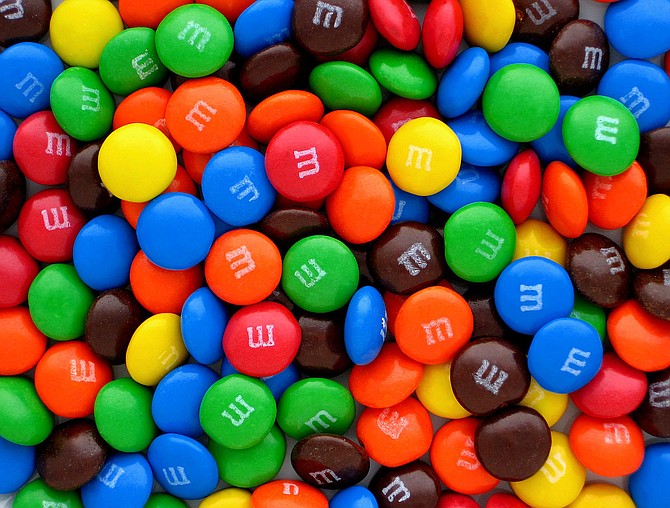 Facebook
Facebook
 X
X
 Instagram
Instagram
 TikTok
TikTok
 Youtube
Youtube

Dear All-Knowing One: Often, candies such as chocolate-covered cherries are mostly rounded, with one flat side. That is due to the candy being laid down to dry after being dipped in the chocolate. But peanut M&Ms and other such candies are round or oval with no flat side. A friend of mine told me that this feat is accomplished by covering the peanut in chocolate, then suspending the candy in mid-air by using a jet of compressed air. Thus, no flat part from being on a flat surface. Is this true? —A Friend in Need, @usa.net
Dang. I was rooting for Friend’s friend to be right. The research elves and I were ready to hop a plane to the factory back East and goggle at a room full of floating M&Ms — colorful little UFOs bobbing on jets of air. We’d already packed our security blankets and clean socks before we learned the real M&M coating process is much less interesting.
The chocolate centers are made in molds, then they trundle along a special conveyor where they’re covered with many, many thin but sturdy coats of candy shell. When the coating’s thick enough so they melt in your mouth, not in your hand, the candy’s dumped into a large drum, like a clothes dryer. They bump and slide around each other to polish off any drips or rough spots and acquire their shiny finish. Air jets in the drum do keep the candies hopping, and food-grade wax in the coating helps the process along, too. So the flying M&Ms proposition is a dud, unfortunately. No imagination at the M&M/Mars plant, I guess.


Dear All-Knowing One: Often, candies such as chocolate-covered cherries are mostly rounded, with one flat side. That is due to the candy being laid down to dry after being dipped in the chocolate. But peanut M&Ms and other such candies are round or oval with no flat side. A friend of mine told me that this feat is accomplished by covering the peanut in chocolate, then suspending the candy in mid-air by using a jet of compressed air. Thus, no flat part from being on a flat surface. Is this true? —A Friend in Need, @usa.net
Dang. I was rooting for Friend’s friend to be right. The research elves and I were ready to hop a plane to the factory back East and goggle at a room full of floating M&Ms — colorful little UFOs bobbing on jets of air. We’d already packed our security blankets and clean socks before we learned the real M&M coating process is much less interesting.
The chocolate centers are made in molds, then they trundle along a special conveyor where they’re covered with many, many thin but sturdy coats of candy shell. When the coating’s thick enough so they melt in your mouth, not in your hand, the candy’s dumped into a large drum, like a clothes dryer. They bump and slide around each other to polish off any drips or rough spots and acquire their shiny finish. Air jets in the drum do keep the candies hopping, and food-grade wax in the coating helps the process along, too. So the flying M&Ms proposition is a dud, unfortunately. No imagination at the M&M/Mars plant, I guess.
Comments